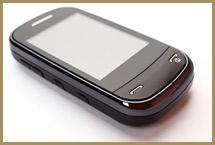Teachers, raise your hand if reading time is your favorite part of the day! Without a doubt, one of the most frustrating issues a teacher has to deal with is reading. In a normal classroom, you may have a few students who are dyslexic, some who might need glasses but don’t know it, others who barely get by, and of course, the few whiz kids who are beyond their age level. Thanks to teacher’s aides and volunteers, you can usually divide your students into categories of similar skill levels. We know that the better a child’s reading foundation is, the better his/her chances are at succeeding in school.
The availability of the computer and internet in the classroom has profoundly changed our teaching strategies. We already know that our young students can easily outdo us when it comes to digital games, so I want to share with you a couple websites that are using current technology designed to help all of us. I’m in support of anything that can make a difficult job easier, especially when it’s free!
1. Children’s Storybooks Online (Magic Keys)
- This site provides illustrated stories for children from the beginner level to young adult.
- Many of the stories also come with audio capabilities.
- Because this is a free site, there are several ads displayed. In this case, I suggest you check them out as they offer even more ways to effectively enhance your teaching success.
- Click on any story, and you will see that you can easily control what page you are on. If your classroom has a projector that you can access with your computer, you can easily share this with everyone at the same time. Conversely, just using your monitor is useful for a small group.
- Book choices are limited, but it is a great place to begin.
- This is a sister site to the above one and is a phonics tutorial with sound and cartoons for all ages.
- The homepage is cheerful and colorful, which is an immediate attention-getter.
- It offers a variety of words and topics and then breaks them down into phonetic categories that are easy to understand.
- The learning activities are handled like games which takes away much of the apprehension experienced by the children; this is the kind of thing they’ve been doing since they were old enough to push buttons on toddler-style keyboards!
- Be sure to note in the right sidebar that the site is included in the Association for Library Services for Children.
By doing a Google search for “free online books,” you will be amazed at how many resources are out there. Technology is here to stay, and it is our job, as well as our responsibility, to make the best use of it as possible. Teachers, you can do this!










